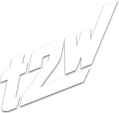TheBramble
Legendary member
- Messages
- 8,394
- Likes
- 1,171
I'm interested in examining one of the plays the BIG boys use on LII. I did raise this on another forum (it was 'sort of' on-topic), but didn't get any response.
So I thought I'd ask the real LII experts over here.
Let's use a hypothetical NASDAQ stock - currently trading 57.76/78 with max bid/ask size of 10.
Let's also say there are a number of orders at each 1c level to 5c on both Bid & Ask.
We then see SCHB (for instance) come in with an Ask at 57.89 with a size of 500. That is, 50 times the size of 'normal' and at 11c higher than the inside ask.
What are we to think?
Here we go:-
Traders-1: The rank newbie (to LII) imagines that SCHB really do want to unload all that stock at that level (rather than just quietly sell small lots at the inside) and either stays out - or more likely, closes a long or goes short. The impact of this being that there is downward pressure on the price. He/She thinks SCHB want to sell. So they go short.
Traders-2: The next level up of experience player imagines that SCHB know what the Trader-1 players are going to do. They wait for SCHB (who are waiting for Trader-1 players to take the price down) to take their Ask away and start buying the now lower-priced stock in smaller lots at the inside Bid directly or through other ECNs.
(SCHB may not take their Ask away until their buying starts to raise the price to an extent that their spurious Ask of 500 gets closer to the (rising) inside Ask.)
At this point, the Trader-2 players also pile in, taking the price higher.
Traders-3: The next level up know that SCHB know what Trader-1 and Trader-2 players are thinking (and depending upon the strength of these 2 levels - relative to each other) wait for one side to win out before taking their view.
I'm I going too far with this? How many levels are there normally operating?
What level do the majority operate at?
What are the strengths of the levels relative to each other?
So I thought I'd ask the real LII experts over here.
Let's use a hypothetical NASDAQ stock - currently trading 57.76/78 with max bid/ask size of 10.
Let's also say there are a number of orders at each 1c level to 5c on both Bid & Ask.
We then see SCHB (for instance) come in with an Ask at 57.89 with a size of 500. That is, 50 times the size of 'normal' and at 11c higher than the inside ask.
What are we to think?
Here we go:-
Traders-1: The rank newbie (to LII) imagines that SCHB really do want to unload all that stock at that level (rather than just quietly sell small lots at the inside) and either stays out - or more likely, closes a long or goes short. The impact of this being that there is downward pressure on the price. He/She thinks SCHB want to sell. So they go short.
Traders-2: The next level up of experience player imagines that SCHB know what the Trader-1 players are going to do. They wait for SCHB (who are waiting for Trader-1 players to take the price down) to take their Ask away and start buying the now lower-priced stock in smaller lots at the inside Bid directly or through other ECNs.
(SCHB may not take their Ask away until their buying starts to raise the price to an extent that their spurious Ask of 500 gets closer to the (rising) inside Ask.)
At this point, the Trader-2 players also pile in, taking the price higher.
Traders-3: The next level up know that SCHB know what Trader-1 and Trader-2 players are thinking (and depending upon the strength of these 2 levels - relative to each other) wait for one side to win out before taking their view.
I'm I going too far with this? How many levels are there normally operating?
What level do the majority operate at?
What are the strengths of the levels relative to each other?
